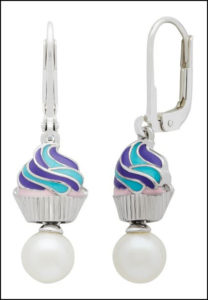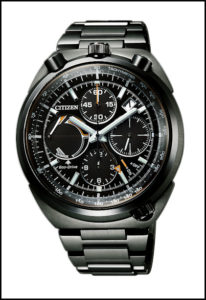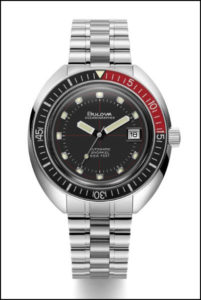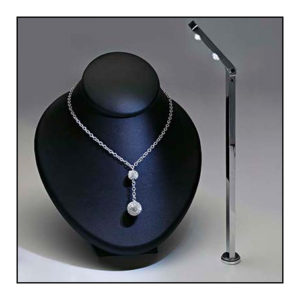Branding Matters
Branding is perhaps more important now than it has ever been, an imperative for differentiation through authentic storytelling relating to the products and services you promote. The need to differentiate and deliver your message to your target market is critical in a business climate where the Internet, social media and other technology create a lot of noise.
 “We live in a world that requires labels for consumer understanding of why this product is right for me,” explains Mark Hanna, Chief Marketing Officer of the NYC-based Richline Group. “A brand is that label defining everything from style-right, to quality-correct, to responsibly-sourced to emotionally pleasing. The impact of social selling is immense and it requires brands.”
“We live in a world that requires labels for consumer understanding of why this product is right for me,” explains Mark Hanna, Chief Marketing Officer of the NYC-based Richline Group. “A brand is that label defining everything from style-right, to quality-correct, to responsibly-sourced to emotionally pleasing. The impact of social selling is immense and it requires brands.”
Richline, says Hanna, has been a champion of brands, albeit primarily private-label, exclusive brands for retailers. “Our future strategy is to create national brands with clear consumer perceptions and multi-retailer availability like Honora Pearls.” The company is also known for helping to brand the gold category with its industry-wide initiative, started over 15 years ago, May is Gold Month.
“Honora Pearls and gold are two examples that speak effectively to our strong belief in both branding and establishing trust with the consumer,” explains Hanna. “These two initiatives, one a brand and the other a category, are examples of how we believe we should be interacting with consumers.”
Watch This Space
CitizenPerhaps no other category recognizes and champions branding as well as the watch segment. “Branding via  brand authentic storytelling and strong customer experience are key to winning at retail,” says Amy Fisher, senior vice president of marketing for Citizen Watch, New York. “Through a consistent brand message and understanding your consumer, retailers can provide their customers with the products they want and the experiences to keep them engaged and loyal.”
brand authentic storytelling and strong customer experience are key to winning at retail,” says Amy Fisher, senior vice president of marketing for Citizen Watch, New York. “Through a consistent brand message and understanding your consumer, retailers can provide their customers with the products they want and the experiences to keep them engaged and loyal.”
To help tell its story, Citizen partners with real people that share stories aligned with its core values and brand DNA. As an example, Fisher cites the brand’s relationship with polar explorer, Eric Larsen. “He has taken several of our watches on his various expeditions creating authentic content for our consumer.”
In today’s rapidly shifting retail environment, faced with a new generation of consumers, it is more important than ever to build and drive brand identity, advocates Susan Chandler, Chief Merchandising Officer, Bulova, New York. “As more purchasing decisions are being made or influenced online, branding is crucial to differentiate and motivate to drive sales. The key component of a brand is to make an emotional connection with the consumers and maximize engagement. Branding also highlights the product attributes, ensuring the consumer’s understanding of what benefits the brand will deliver.”
 To help champion its message of innovation, quality and design excellence, Chandler says Bulova partners with its clients to create product to custom-fit their assortment, continually assessing whitespace to maximize sales opportunities. “We support the product with social media and a multitude of marketing assets to communicate our brand message and engage with the consumer.”
To help champion its message of innovation, quality and design excellence, Chandler says Bulova partners with its clients to create product to custom-fit their assortment, continually assessing whitespace to maximize sales opportunities. “We support the product with social media and a multitude of marketing assets to communicate our brand message and engage with the consumer.”
Translating the Message
Most brands provide marketing collateral to help their retail customers sell through. “Most retailers are grateful they don’t have to spend the time and resources creating an ad from scratch for the brands they carry,” says Allison Peck for the NYC-based jewelry manufacturer Color Merchants. For the company’s Brevani brand, it offers four different ad campaign retailers can choose, in print, social media, billboards, Duratrans, and customer take-a-ways.
“One of the ways Brevani is helping retailers deliver the experience consumers want is by sharing marketing, specifically social media content,” Peck explains. “Brevani shares social media content regularly with its retailers helping to keep the content fresh, exciting, seasonal and a true representation of how ‘the house’ wants the brand to be perceived to the end consumer.”
Undoubtedly, the jeweler’s brand is the most important storyline to carry through the shopping experience—from captivating displays that draw customers in to the “wow” elicited when the package is presented.
“Customized and meaningfully real experiences resonate with consumers,” says Nathan Button, Product Manager for the Display and Packaging division at Rio Grande, a Richline Group company, in Albuquerque, New Mexico. “So, how jewelers can set themselves apart from the rest becomes one of the most important questions to ask. Displays instantly present your products, setting forward that initial perception of your, brand. And that perception needs to carry through as it leaves the store in the packaging. Wowing the recipient every time the jewelry box is opened!”
the Display and Packaging division at Rio Grande, a Richline Group company, in Albuquerque, New Mexico. “So, how jewelers can set themselves apart from the rest becomes one of the most important questions to ask. Displays instantly present your products, setting forward that initial perception of your, brand. And that perception needs to carry through as it leaves the store in the packaging. Wowing the recipient every time the jewelry box is opened!”
Keeping consistent elements within the brand, from logo to color choices and distinct details, over time fosters familiarity, reminds Button. “Obviously, begin with your business logo and preferably a distinct color. From there the focus needs to be on meaningfully different accents and elements. Things like wrapping the box in a heavy coarse bow or including a handwritten note on the back of each brand tag. There’s a balance to be achieved with being familiar while unique.”







